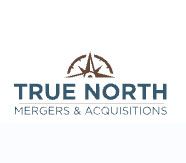Integration Planning: Overcoming Common Challenges to Achieve M&A Success

True North Mergers & Acquisitions
June 2, 2024

Diversification, increased profits, exploring new markets, driving growth—the potential benefits of business mergers and acquisitions are enticing, but the road to success is fraught with challenges. That’s especially true during the post-merger integration phase.
Effective integration planning becomes paramount, as it helps ensure a smooth transition. Here, we’ll cover five common integration challenges and how to overcome them so you can set yourself up for success.
Challenge #1: Merging Differing Financial Structures
Bringing two distinct entities together into one cohesive unit is problematic in and of itself, let alone navigating differing financial structures, models, and accounting practices. Financial integration is one of the most challenging and intricate aspects of mergers and acquisitions because it requires an exhaustive analysis of all current practices. Before you can consolidate frameworks, you must thoroughly understand each setup.
The solution here lies partly in the work you completed during due diligence. As you already have extensive data and insights, you can identify areas of financial structure divergence more quickly. With assistance from analysts, develop a comprehensive, achievable financial model and forecast best suited for the merged entity.
Challenge #2: Cultural Alignment
Successfully bridging cultural differences between organizations is a common post-merger challenge many businesses face. Teams have unique ways of working and different values, and those differences could create conflict. Therefore, integration planning should prioritize culture integration.
From the start, it’s important to encourage open communication and foster an environment of mutual respect. Your leadership team must effectively articulate new shared visions, values, and goals to create a unified organizational culture that survives long after the post-merger process is complete.
Challenge #3: Ensuring Regulatory Compliance
Intellectual property rights, data privacy laws, antitrust regulations, industry-specific regulations—there’s much to navigate to ensure the new entity complies with all laws and regulations.
An integral part of an integration plan, no matter the type of merger or acquisition, is regulatory due diligence, which notes all gaps, risks, and legal obligations. This will help mitigate risk and safeguard against potential liabilities.
Challenge #4: Streamlining Operations
It’s natural to have redundancies during the initial stages of a merger or acquisition. Still, if not addressed promptly, you can’t optimize resources and efficiency or protect your bottom line.
Streamlining operations post-merger is a vital part of a comprehensive integration strategy. Conduct a thorough assessment of processes, technologies, and workflows, carefully evaluating for areas of optimization or consolidation.
Challenge #5: Realizing Cost Savings
Achieving anticipated cost savings is one of the most important objectives of a merger or acquisition, but it requires a strategic approach to both cost optimization and efficiency improvement.
To help realize cost savings post-merger, your integration plan should look at:
- Cost-saving opportunities across all aspects of the business, including overhead expenses
- Current contracts with suppliers and vendors and new options that may offer more favorable terms
- Inventory levels and logistics and how you can optimize both
- Either rationalizing overlapping roles or eliminating redundant positions
One of the biggest missteps companies take post-merger is failing to monitor their cost-savings strategies continuously. What works immediately following a merger or acquisition may not be the best strategy a year later. Therefore, it’s important to establish processes for continuous monitoring of cost-saving initiatives during the early stages.
Turn to True North Mergers & Acquisitions for Integration Planning Assistance
Integration planning is a critical component of merger or acquisition success. By identifying common challenges and anticipating how to overcome them, integration planning positions the new entity to be more competitive and better positioned for long-term success.
Let our team assist you throughout the mergers and acquisitions processes, helping guide you through the complexities of post-merger integration. Connect with True North Mergers & Acquisitions Chief Operating Officer and Managing Director Erica Gilson or Lead managing
Director Michael Hubsmith to learn more.
Subscribe to our Newsletter
Sign up for the latest industry insights from True North Mergers & Acquisitions.




